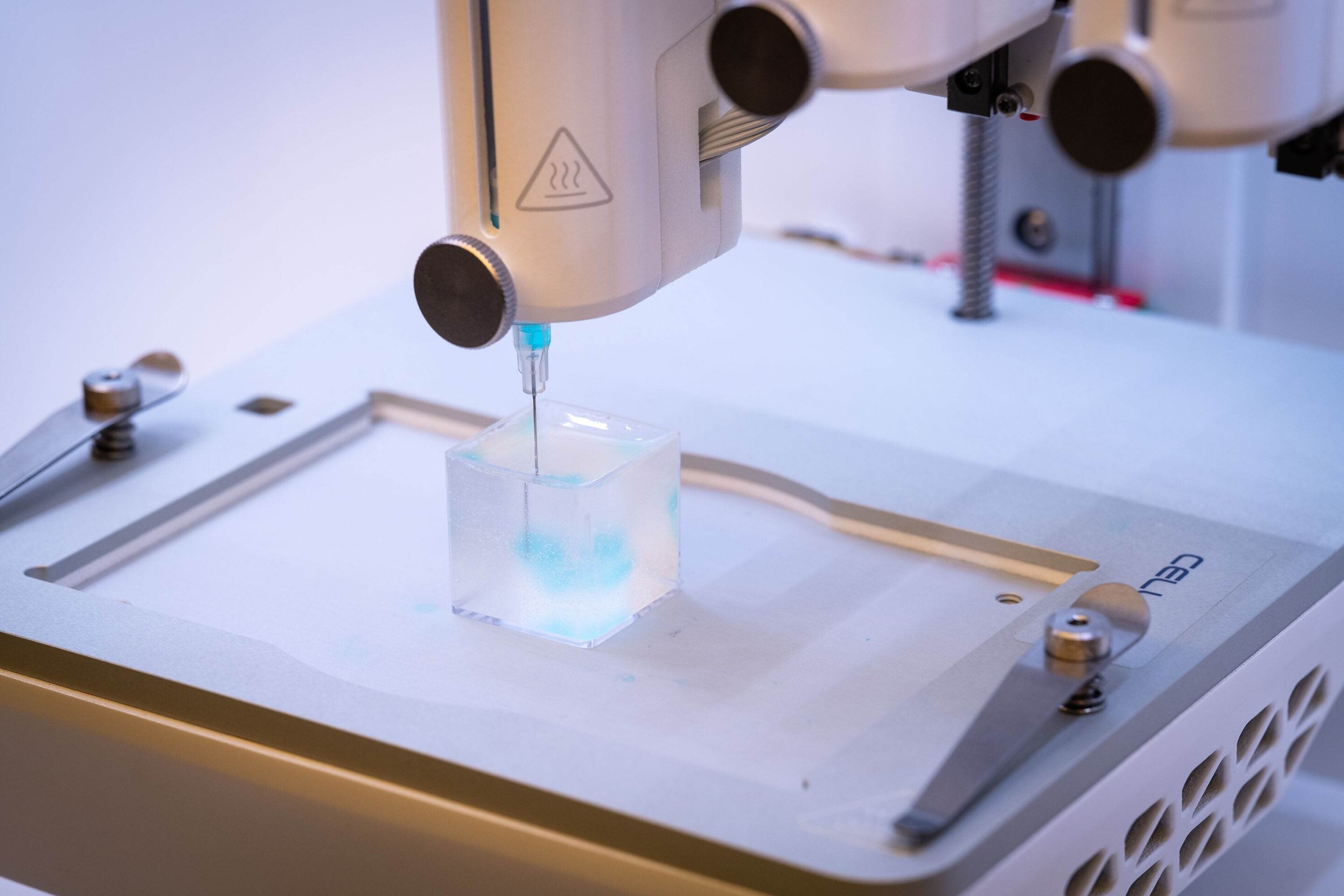New bioink for cell bioprinting in 3-D
Date: 15.7.2020
A research group led by Daniel Aili, associate professor at Linköping University, has developed a bioink to print tissue-mimicking material in 3-D printers. The scientists have developed a method and a material that allow cells to survive and thrive.
 "Bioprinting is a new and exciting technology to manufacture three-dimensional tissue-mimicking cell cultures. It has been a major problem to develop the bioink required, i.e. a material that can encapsulate the cells and be used in printers.
"Bioprinting is a new and exciting technology to manufacture three-dimensional tissue-mimicking cell cultures. It has been a major problem to develop the bioink required, i.e. a material that can encapsulate the cells and be used in printers.
Our bioink has several exciting properties that open new opportunities to approach our vision – creating tissue and organs in the laboratory," says Daniel Aili, associate professor in the Division of Biophysics and Bioengineering at Linköping University.
The properties of the ink can be modified as required and they have achieved excellent results in tests when using the material with different cell types: liver cells, heart cells, nerve cells and fibroblasts (a type of cell found in connective tissue).
The research group has also solved one of the major challenges when attempting to print organic material: they have found a method that allows the cells to survive and thrive, despite the harsh treatment they receive.
The ink the group has developed contains hyaluronan and synthetic molecules similar to proteins, known as peptides. These are bound together in a water-rich network, a hydrogel, that functions as a scaffolding for the cells.























